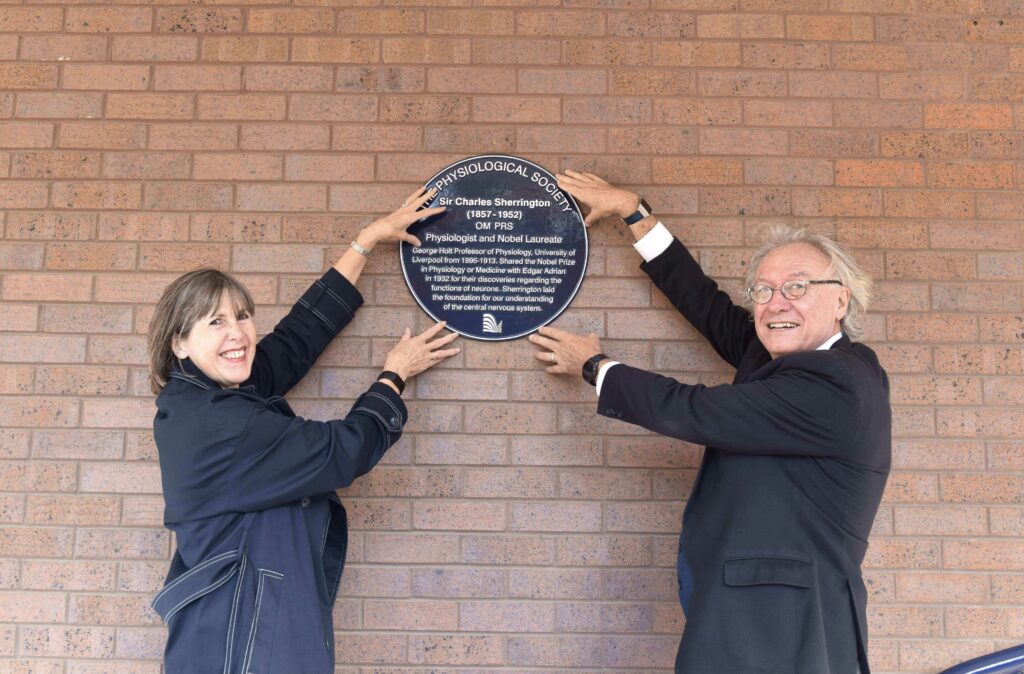The Physiological Society was delighted to unveil a blue plaque in Liverpool on 29 September celebrating the work of leading physiologist Sir Charles Scott Sherrington.
Sherrington received the Nobel Prize in Physiology or Medicine in 1932 with Edgar Adrian for their work on the functions of neurons. Prior to their research, it was thought that reflexes occurred as isolated activity within a reflex arc; they showed that instead, reflexes require integrated activation and showed reciprocal innervation of muscles, a principle now called Sherrington’s Law.
The Sherrington plaque was unveiled yesterday afternoon by Professor Dame Janet Beer, Vice-Chancellor of the University of Liverpool.
It has been erected at the University of Liverpool’s Sherrington Building.
Professor Dame Janet Beer, Vice-Chancellor of the University of Liverpool said:
“As Vice Chancellor of the University of Liverpool, I am honoured to unveil this blue plaque to recognise Sir Charles Sherrington. We are proud that Sherrington, who contributed so much to the discipline of physiology, began his academic career here at Liverpool as the Holt Professor of Physiology. From the Nobel Prize for his work on the function of neurons, to his advocacy work for women in science and his contributions to the war effort, Sherrington has made an indelible mark on our history.”
Professor David Paterson, President of The Physiological Society, added:
“The Physiological Society is delighted to be recognising the tremendous achievements of Sir Charles Sherrington, a celebrated neurophysiologist and Nobel Laureate who shaped the understanding of the central nervous system. The plaque is aptly displayed on the Sherrington Lecture Theatre on the Sherrington Building as an acknowledgment of the institution where this great scientist began his academic career. It provides long-term recognition of the lasting impact of Sherrington and his work, and by extension serves as a marker of excellence for the University of Liverpool.
This is the third unveiling in The Physiological Society’s Blue Plaque scheme which intended to raise the visibility of the physiology and give the wider public an insight into the positive role that ‘the science of life’ plays in their everyday lives. It is hoped that these plaques will spark curiosity and help inspire new generations to get involved in the physiological sciences.”

Notes to Editor
- Attached – Photo of plaque unveiling
- More information on Sir Charles Scott Sherrington: https://www.physoc.org/about-us/our-blue-plaques/
- The Physiological Society brings together over 4,000 scientists from over 60 countries. The Society promotes physiology with the public and parliament alike. It supports physiologists by organising world-class conferences and offering grants for research and also publishes the latest developments in the field in its three leading scientific journals, The Journal of Physiology, Experimental Physiology and Physiological Reports. physoc.org
